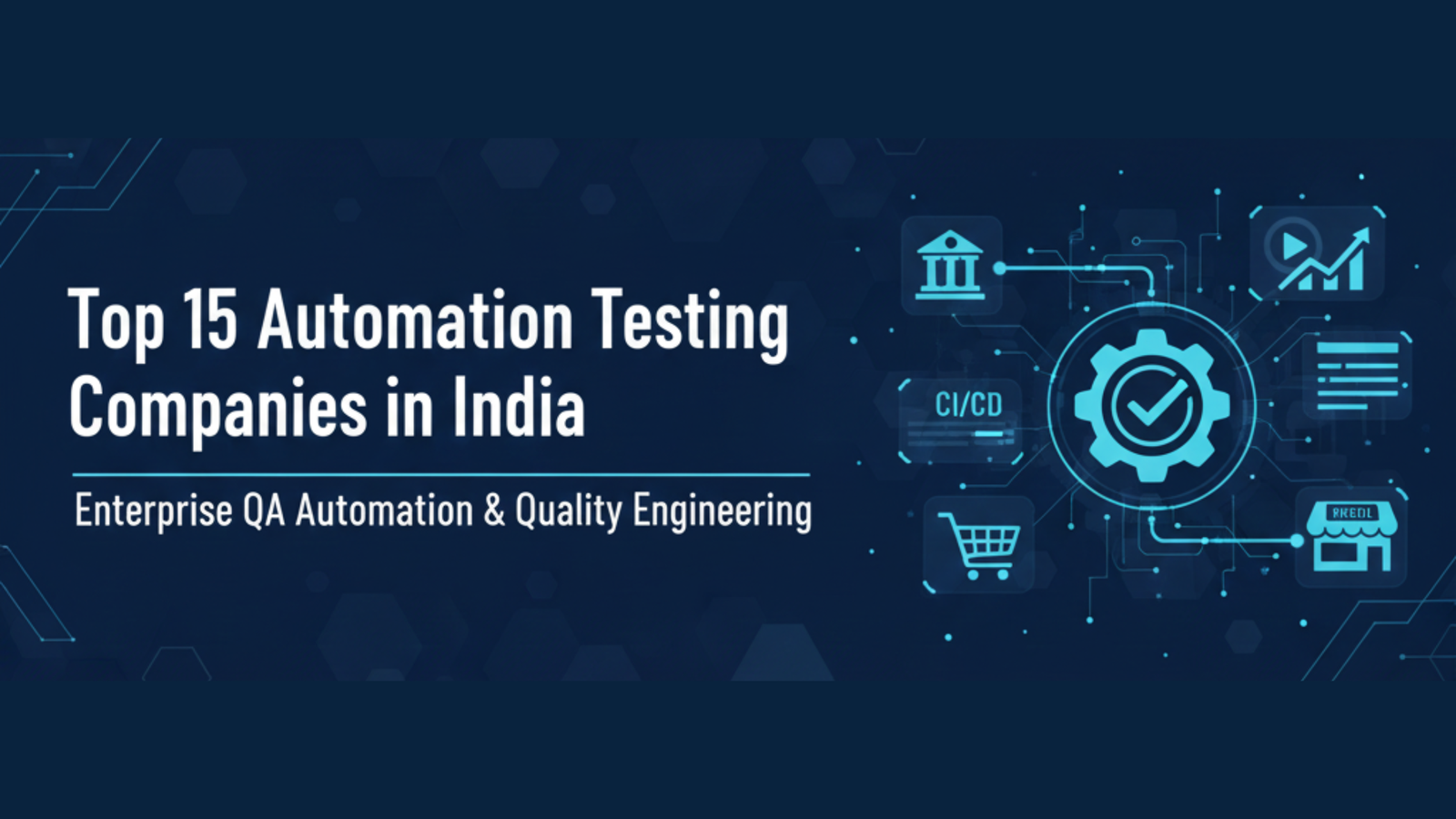Non-Banking Financial Companies (NBFCs) in India are racing to meet booming demand for digital lending and financial services. In this “always-on” environment, any technology failure directly impacts business, customer service, and revenues. Even brief outages stall loan approvals, block customer access and invite dissatisfied borrowers to competitors.
Regulators like the RBI now stress that interruptions in operations can harm consumers and even threaten financial stability. For NBFCs which lack the deep pockets of big banks, every minute of downtime carries a sharp price in lost interest income, wasted resources, and reputational damage.
In this blog, we’ll explore the true cost of downtime for NBFCs, unpack why proactive Application Performance Engineering (APE) and Application Performance Management (APM) strategies are essential, and highlight how Avekshaa Technologies’ innovative solutions help NBFCs ensure reliability, customer trust, and sustained growth.
Quantifying the Downtime Costs
The financial cost of outages is enormous. A single unplanned outage can erase millions in loan processing and service fees, trigger penalties or refund obligations, and damage customer trust. These figures do not include soft costs such as shaken investor confidence, churn, and long-term brand damage. The RBI’s recent guidelines explicitly warn that service disruptions “may affect consumers, jeopardise the NBFC’s sustainability and upset financial stability”.
Estimated Downtime Cost for Indian NBFCs
Downtime costs vary by size and digital maturity. Based on industry estimates and real-world CIO inputs, here’s how estimated costs vary depending on NBFC type and their focus.
| Type of NBFC | Estimated Costs ((₹/hour) | Focus |
| Small NBFC | ₹5 lakh – ₹20 lakh | Minimal digital operations, limited customer base |
| Mid-sized NBFC | ₹20 lakh – ₹75 lakh | Moderate online services, EMI, loans, payments |
| Large NBFC | ₹1 crore – ₹3 crore | Extensive digital presence, app or web-based transactions |
Each minute of downtime is a measurable risk. For growing NBFCs, the solution is proactive performance engineering at every layer of the stack.
● Revenue losses: Outages halt loan disbursement, EMI collections and other revenue streams. Even a few minutes offline can cost lakhs of rupees in missed business.
● Customer trust: Downtime erodes confidence. Borrowers cut off from their accounts or approvals may switch providers. Poor digital availability is a quick way to lose customers.
● Operational waste: Emergency firefights during outages pull valuable IT staff away from new projects. Fixing problems in production can be 100× more expensive than catching them in development.
● Regulatory risk: NBFCs must meet service expectations under RBI rules. Recurring failures can attract audits or directives to improve operational resilience.
Industry surveys have found that some enterprises lose over $5,000 per minute of unplanned downtime, and that figure is even higher for complex financial systems. For growing NBFCs, the solution is to prevent outages proactively, rather than simply reacting after the fact.
APE vs APM: Engineering vs Monitoring
Two complementary approaches tackle downtime and performance: Application Performance Engineering (APE) and Application Performance Management (APM). In simple terms, APE is proactive engineering (designing and testing for performance up front), while APM is reactive monitoring (detecting and fixing issues in production).
● APM (Monitoring): As defined by experts, APM encompasses “the people, processes and tools used to detect, diagnose and report on an application’s performance once that application is in production”. APM tools and services continuously watch live systems, tracking response times, error rates and resource usage. Well-tuned APM alerts flag slowdowns immediately, so teams can diagnose and repair issues before customers notice. In practice, APM provides vital real-time visibility into health and uptime. For example, effective APM means engineers see a spike in latency and can drill down to the faulty database query or network glitch.
● APE (Engineering): By contrast, APE shifts left in the life cycle. Its focus is “establishing performance objectives and testing throughout the application life cycle”. In other words, performance, scalability and availability are designed into the system from the start. APE uses load-testing, architecture reviews and capacity planning during development and upgrades, so that most issues are discovered (and fixed) before deployment. That way, one has fewer surprises in production. As Avekshaa and industry experts note, proactively engineering applications for performance “leads to dealing with fewer issues in production, reduced cost and improved customer service”.
In practice, NBFCs need both. APE ensures lending platforms are built right; APM ensures they stay right. Continuous monitoring can rapidly surface new issues (e.g. under an unexpected traffic spike), while a strong performance engineering regimen prevents most bottlenecks and security flaws from ever reaching production. Together, APE and APM form a 360-degree defense against downtime.
How APE & APM Minimize Downtime?
For NBFCs, the combination of APE and APM translates directly into uptime and efficiency:
● Faster detection and repair: APM tools highlight exactly what and where something went wrong. Well-tuned alerts (e.g. on transaction failures or slow loans API calls) shorten Mean Time to Repair (MTTR), letting IT teams fix issues before borrowers notice.
● Predictive capacity: APE load-tests lending platforms so that spikes (like during payday) don’t crash the system. By modeling peak loads ahead of time, NBFCs avoid overloading core services.
● Drilled-down insights: Full-stack APM (monitoring from front-end apps down to databases) ensures no blind spots. This prevents hidden failures from snowballing into outages.
● Proactive fixes: APE-led code and architecture reviews catch inefficiencies (like poorly optimized SQL queries) long before they affect hundreds of users.
Without this disciplined approach, many APM investments fall short. As one industry analysis notes, APM tools alone can identify 8090% of issues, but unresolved problems still linger if specialist tuning is lacking. In other words, tools must be paired with expertise. Avekshaa emphasizes that monitoring by itself is like “an ultrasound report without a specialist providing a resolution”. Their philosophy is to use APM to find the signal, and apply APE (with tools like their PASS platform) to resolve the root causes.
APE/APM Solutions By Avekshaa
Avekshaa Technologies specializes in eliminating downtime for BFSI firms, including NBFCs. They pioneered a unique P-A-S-S™ Assurance Platform that unifies performance, availability, scalability and security across every layer of the stack. In short, Avekshaa engineers write, configure and operate the monitoring and performance-regimen on behalf of clients. Key aspects of their approach include:
● Tailored APM setup: Avekshaa’s experts fine-tune APM tools to each NBFC’s environment, eliminating false alerts and noise. This means only real problems generate alarms, so teams act quickly on the right issues.
● Customized dashboards: They build intuitive dashboards showing real-time performance metrics and bottlenecks. With the right charts (e.g. transactions per second, error rates), managers gain immediate insight into user impact.
● Full-stack visibility: Avekshaa ensures no layer is left blind. Whether it’s API gateways, core banking engines or middleware, their monitoring covers it all. This holistic view helps catch even rare cascading failures.
● Proactive performance engineering: Using the PASS platform and extensive domain expertise, Avekshaa conducts performance reviews and capacity planning before deployments. They literally prevent many outages from ever occurring. Their strategy is data-driven, every change is tested under load, and analytics flag any emerging issue so it can be fixed ahead of time.
This solution mix delivers results. Avekshaa reports that across hundreds of engagements it has achieved up to 10× return on investment for clients. Their PASS platform alone has resolved over 5,000 complex performance and scalability problems with a 100% success rate.
Case Study: A Large NBFC’s Transformation
A concrete example highlights the difference: a large digital-lending NBFC was plagued by frequent outages. Its loan origination platform would slow or crash under heavy use, causing revenue loss and poor service. Avekshaa stepped in with an integrated APM and APE program. The results were dramatic in their own words, the NBFC achieved:
● 99% reduction in downtime for its critical lending applications.
● 20% faster Mean Time to Repair (MTTR), freeing the team to focus on new projects.
● 90% of issues resolved before users were impacted, thanks to pre-emptive alerts.
● 20% increase in conversion rate after smoothing the user flow and eliminating lags.
● 25% quality-of-service improvement in mapped critical services.
In short, what was once a dire cost-center (unplanned outages) became a source of competitive advantage. By slashing downtime almost entirely, the NBFC recovered lost revenue and improved borrower satisfaction. This case study underscores that investing in APE/APM pays for itself many times over as industry analyses predict.
Why NBFCs Must Act Now
The NBFC sector in India is booming, but so are the expectations and regulations around uptime. Customers today demand instant approvals and 24/7 access, and companies that fail to deliver risk losing them. Meanwhile, the RBI is tightening rules on operational resilience. Proactive performance management is no longer a “nice to have”, it’s essential.
Ahead-of-the-curve companies see downtime not as an inevitable nuisance but as a measurable risk that can be engineered away. In the connected world, prevention is better than cure. As technology expert Jim Metzler put it, APM and APE must work hand-in-hand: APM alerts you to problems in real time, but APE finds root causes and prevents recurrence. NBFC leaders should adapt to monitoring today’s live systems while continuously shifting performance metrics to push development.
How Can Avekshaa Help?
track record shows this is practical. By combining deep domain expertise with proprietary tools, they help Indian NBFCs minimize downtime, control costs, and maintain customer trust. In an industry where even a single hour of outage can cost crores, that is a strategic necessity. NBFCs that act proactively tuning performance, stress-testing systems, and establishing 24×7 monitoring will secure their growth and reputation for years to come.


